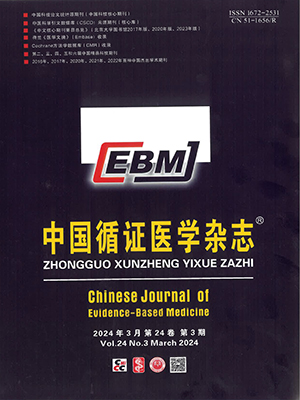| 1. |
Ma J, Pei T, Dong F, et al. Spatial and demographic disparities in short stature among school children aged 7-18 years: a nation-wide survey in China, 2014. BMJ Open, 2019, 9(7): e026634.
|
| 2. |
潘丹丹, 刘建华, 鲁承熙, 等. 重组人生长激素治疗青春晚期大骨龄特发性矮小女童必要性研究. 中国儿童保健杂志, 2016, 24(10): 1077-1080.
|
| 3. |
Peng X, Cao R, Wang Y, et al. Body image dissatisfaction and aggressive behavior among chinese children at different pubdertal stages: a path analysis. Psychol Res Behav Manag, 2022, 15: 2573-2586.
|
| 4. |
Murray PG, Clayton PE, Chernausek SD. A genetic approach to evaluation of short stature of undetermined cause. Lancet Diabetes Endocrinol, 2018, 6(7): 564-574.
|
| 5. |
中华医学会儿科学分会内分泌遗传代谢学组, 《中华儿科杂志》编辑委员会, 梁雁. 基因重组人生长激素儿科临床规范应用的建议. 中华儿科杂志, 2013, 51(6): 426-432.
|
| 6. |
Frank GR. The role of estrogen in pubertal skeletal physiology: epiphyseal maturation and mineralization of the skeleton. Acta Paediatr, 1995, 84(6): 627-630.
|
| 7. |
欧阳力雪, 杨凡. 芳香化酶抑制剂在矮身材青少年男童中的应用研究进展. 中华实用儿科临床杂志, 2020, 35(9): 712-715.
|
| 8. |
McGrath N, O'Grady MJ. Aromatase inhibitors for short stature in male children and adolescents. Cochrane Database Syst Rev, 2015(10): CD010888.
|
| 9. |
Brown EG, Wood L, Wood S. The medical dictionary for regulatory activities (MedDRA). Drug Saf, 1999, 20(2): 109-117.
|
| 10. |
Rothenbuhler A, Linglart A, Bougnères P. A randomized pilot trial of growth hormone with anastrozole versus growth hormone alone, starting at the very end of puberty in adolescents with idiopathic short stature. Int J Pediatr Endocrinol, 2015, 2015(1): 4.
|
| 11. |
Mauras N, Ross JL, Gagliardi P, et al. Randomized Trial of Aromatase Inhibitors, Growth Hormone, or Combination in Pubertal Boys with Idiopathic, Short Stature. J Clin Endocrinol Metab, 2016, 101(12): 4984-4993.
|
| 12. |
王伟, 王燕, 肖雅, 等. 分析来曲唑联合重组人生长激素对快进展型青春期大骨龄特发性矮小男童的疗效. 中文科技期刊数据库(引文版)医药卫生, 2022(3): 278-281.
|
| 13. |
乔玉. 青春期大骨龄矮身材儿童治疗方案的真实世界研究. 济南: 山东大学, 2021.
|
| 14. |
王晓宁. 芳香化酶抑制剂联合rhGH治疗男性特发性矮小症患儿的疗效观察. 国际内分泌代谢杂志, 2019, 39(5): 298-301.
|
| 15. |
王强, 牛忠鹏. 来曲唑辅助治疗生长激素缺乏型矮小症男童的临床价值. 儿科药学杂志, 2022, 28(3): 41-44.
|
| 16. |
刘洪清. 芳香化酶抑制剂联合重组人生长激素治疗青春期大骨龄疗效观察. 自我保健, 2022, 26(21): 60-61.
|
| 17. |
孔元梅, 陈虹, 梁黎, 等. 芳香化酶抑制剂联合生长激素治疗青春期身材矮小症男性患儿的临床研究. 浙江大学学报(医学版), 2020, 49(3): 283-290.
|
| 18. |
Mauras N, Gonzalez de Pijem L, Hsiang HY, et al. Anastrozole increases predicted adult height of short adolescent males treated with growth hormone: a randomized, placebo-controlled, multicenter trial for one to three years. J Clin Endocrinol Metab, 2008, 93(3): 823-831.
|
| 19. |
宋靖荣, 董焱. AI联合rhGH对男性特发性矮小症患儿生长速率、骨密度及骨代谢的影响. 医学综述, 2020, 26(24): 4952-4956.
|
| 20. |
张蔷, 刘丽君, 李金英, 等. 来曲唑改善青春期特发性矮小症男童身高的疗效观察. 实用医学杂志, 2021, 37(3): 369-373.
|
| 21. |
张先来. 基因重组人生长激素联合来曲唑治疗大骨龄矮小儿童的疗效研究. 中国妇幼健康研究, 2017, (S4): 495-496.
|
| 22. |
王慧, 庄昭明. 重组人生长激素联合芳香化酶抑制剂治疗特发性矮小症的效果及安全性. 中外医学研究, 2020, 18(8): 32-34.
|
| 23. |
连群, 蒋清斌, 李伶俐, 等. 来曲唑联合生长激素治疗青春期生长激素缺乏症男孩对成年身高的影响. 中国卫生标准管理, 2016, 7(13): 105-108.
|
| 24. |
张蔷, 刘丽君, 李金英, 等. 重组人生长激素联合来曲唑治疗青春期特发性矮小症男性患儿的疗效观察. 中国儿童保健杂志, 2021, 29(7): 802-805.
|
| 25. |
王俊辉. 芳香化酶抑制剂联合生长激素治疗男性青春期矮小的疗效评价. 杭州: 杭州师范大学, 2019.
|
| 26. |
张莹, 陈瑞敏, 杨晓红, 等. 重组人生长激素联合来曲唑治疗男性青春期矮小临床分析. 中国实用儿科杂志, 2019, 34(9): 775-779.
|
| 27. |
Mauras N, Welch S, Rini A, et al. An open label 12-month pilot trial on the effects of the aromatase inhibitor anastrozole in growth hormone (GH)-treated GH deficient adolescent boys. J Pediatr Endocrinol Metab, 2004, 17(12): 1597-1606.
|
| 28. |
詹舒敏, 彭伟, 董关萍, 等. 生长板成熟与分化调控机制概述. 中华实用儿科临床杂志, 2022, 37(20): 1596-1600.
|
| 29. |
王春林, 梁黎. 第三代非甾体类芳香化酶抑制剂在儿科内分泌临床应用的再认识. 浙江大学学报(医学版), 2020, 49(3): 275-282.
|
| 30. |
Pilutin A, Misiakiewicz-Has K, Kolasa A, et al. The immunoexpression of androgen receptor, estrogen receptors alpha and beta, vanilloid type 1 receptor and cytochrome p450 aromatase in rats testis chronically treated with letrozole, an aromatase inhibitor. Folia Histochem Cytobiol, 2014, 52(3): 206-217.
|
| 31. |
Pilutin A, Misiakiewicz-Has K, Rzeszotek S, et al. Morphological and morphometric changes and epithelial apoptosis are induced in the rat epididymis by long-term letrozole treatment. Eur J Histochem, 2021, 65(3): 3259.
|
| 32. |
林娟, 马华梅, 李燕虹, 等. 来曲唑对青春早中期男童生殖功能与线性生长的近期影响. 中山大学学报(医学科学版), 2018, 39(3): 386-392.
|




